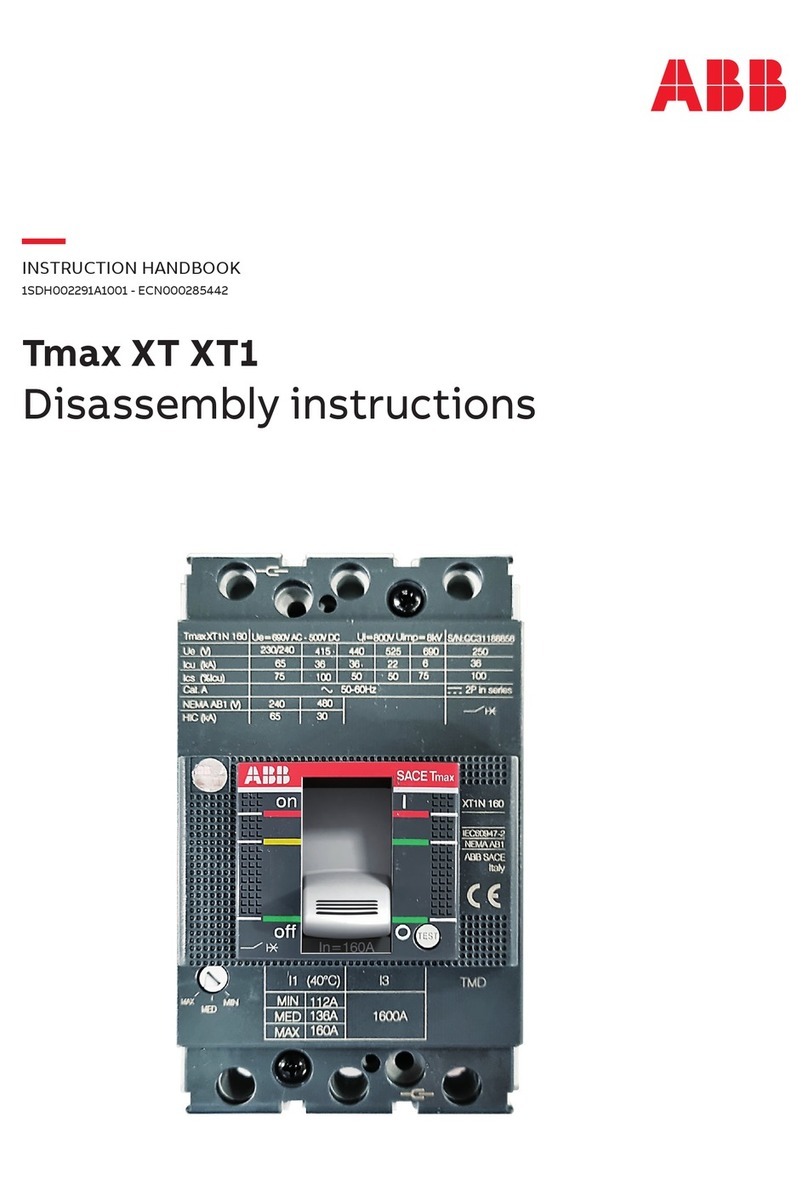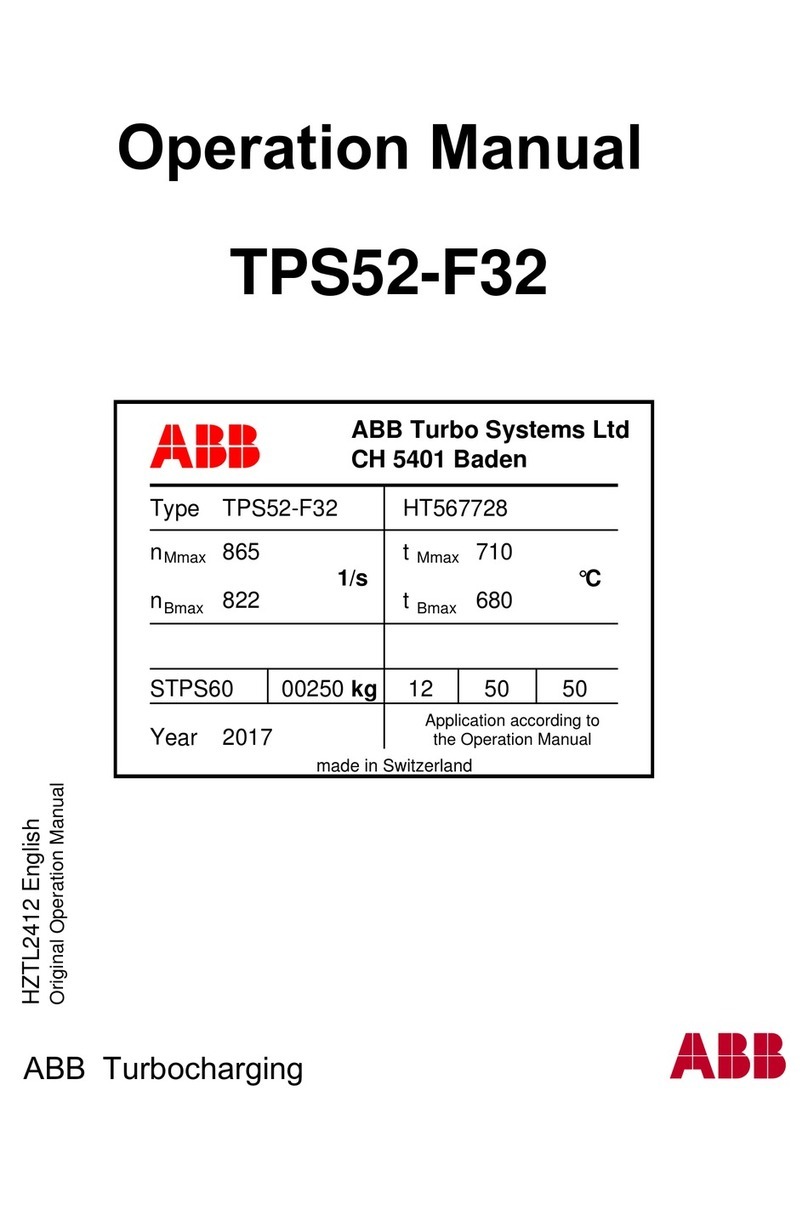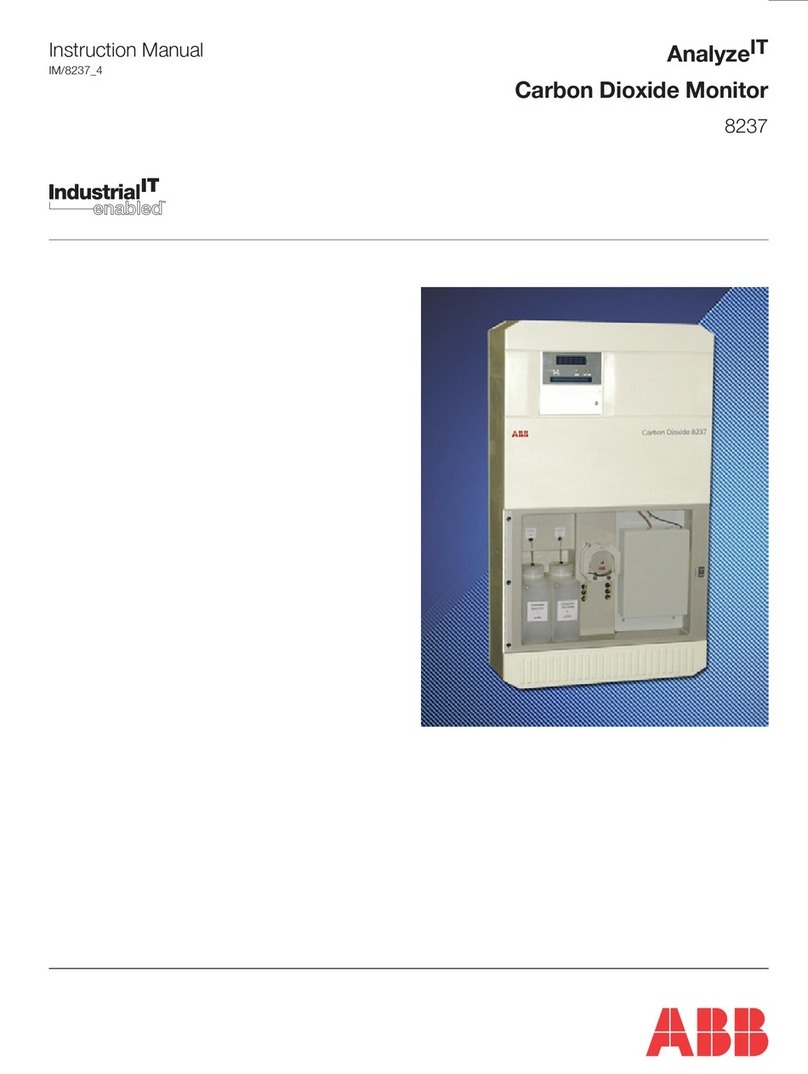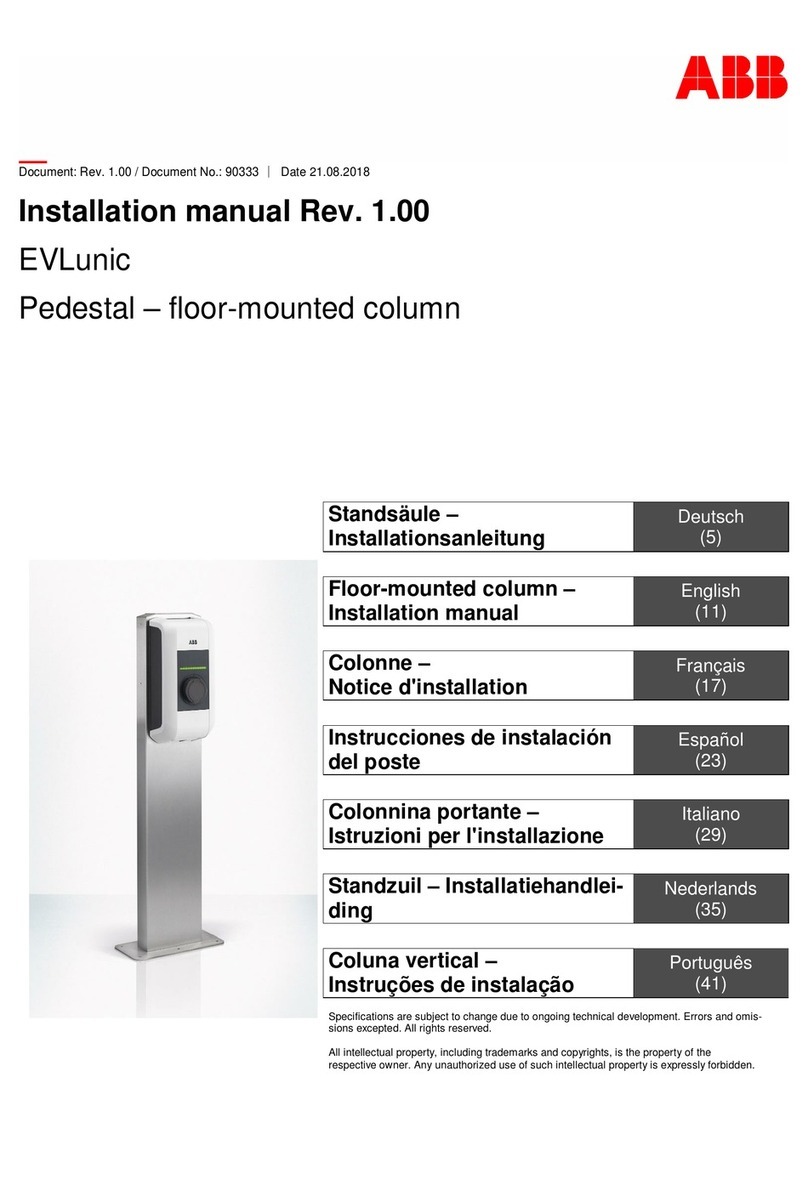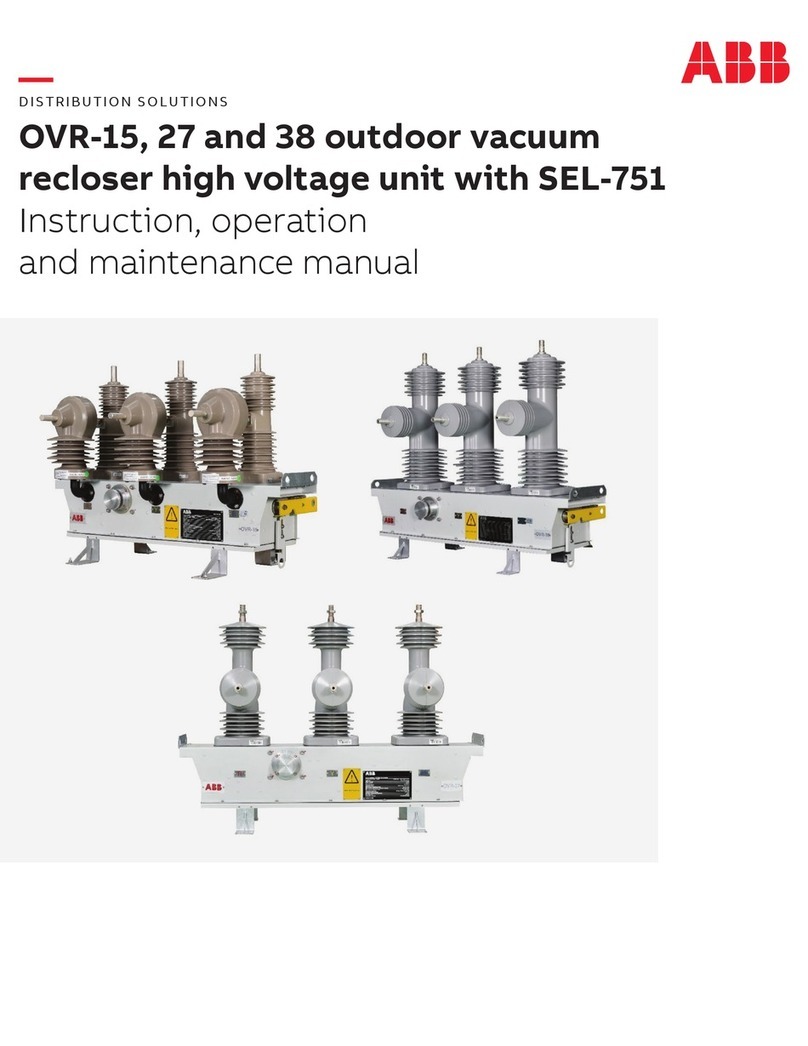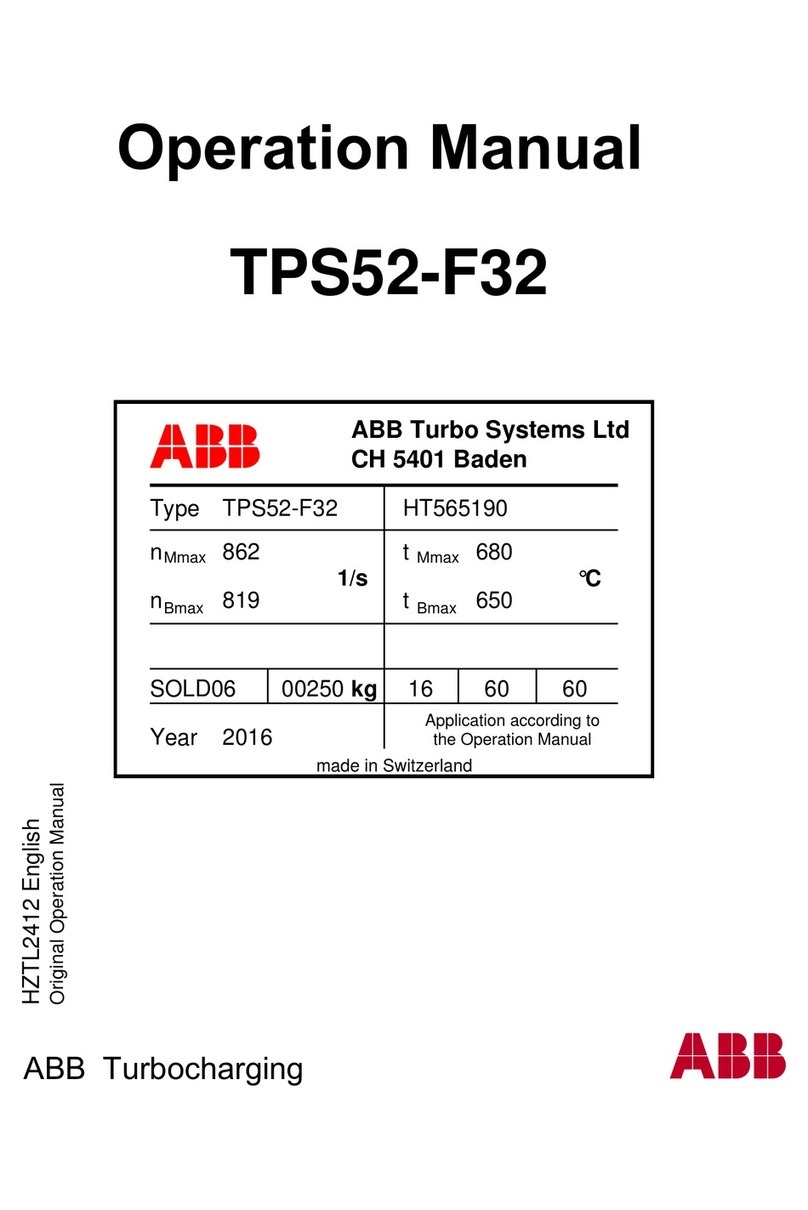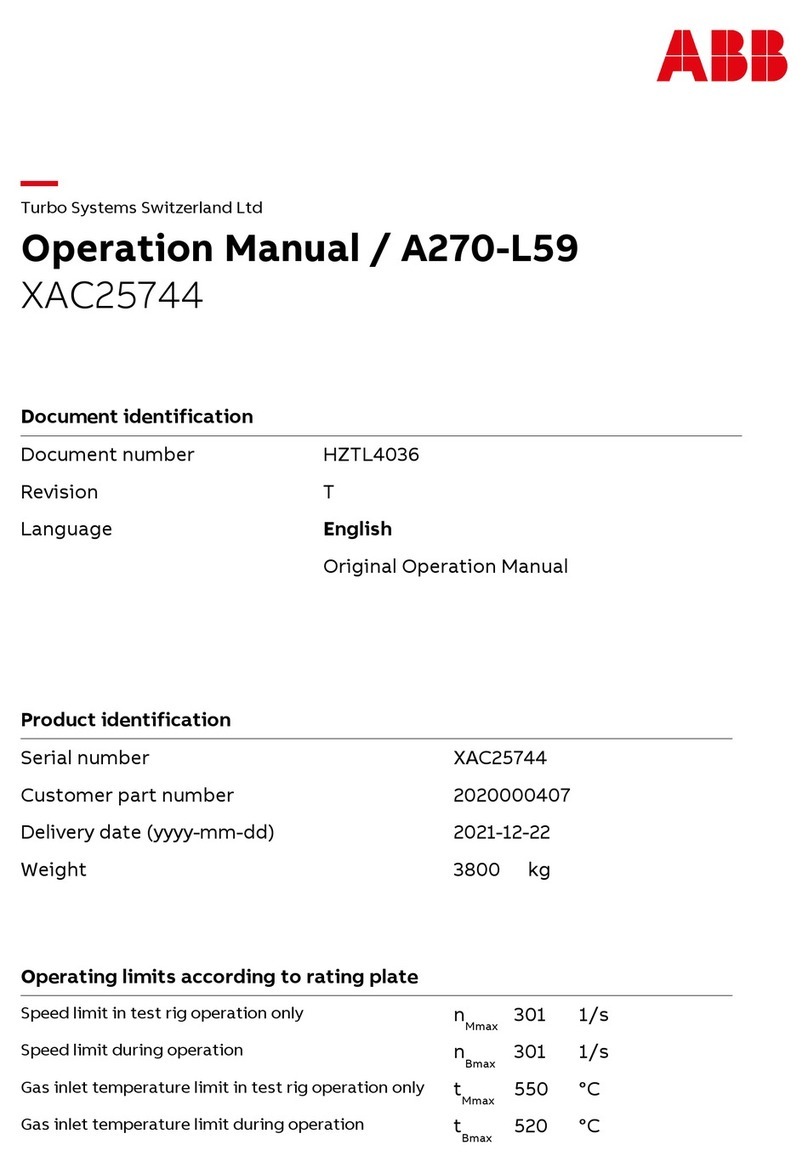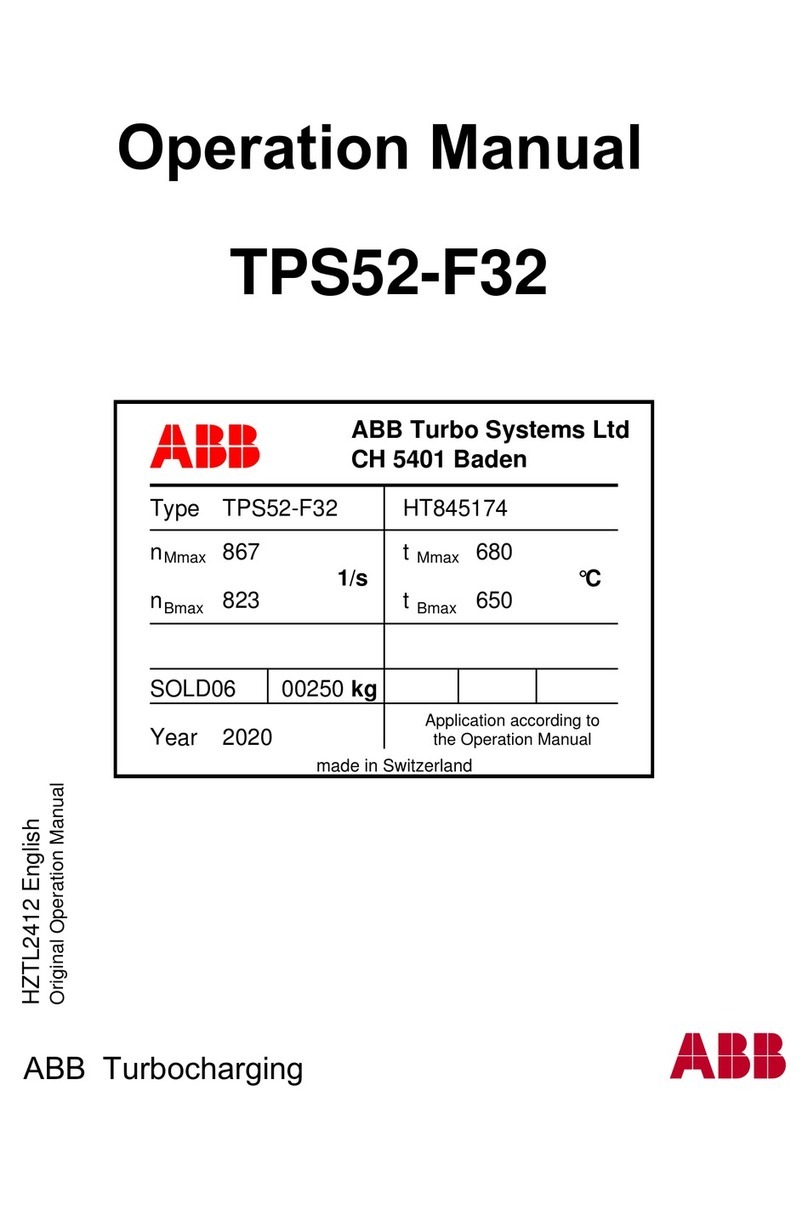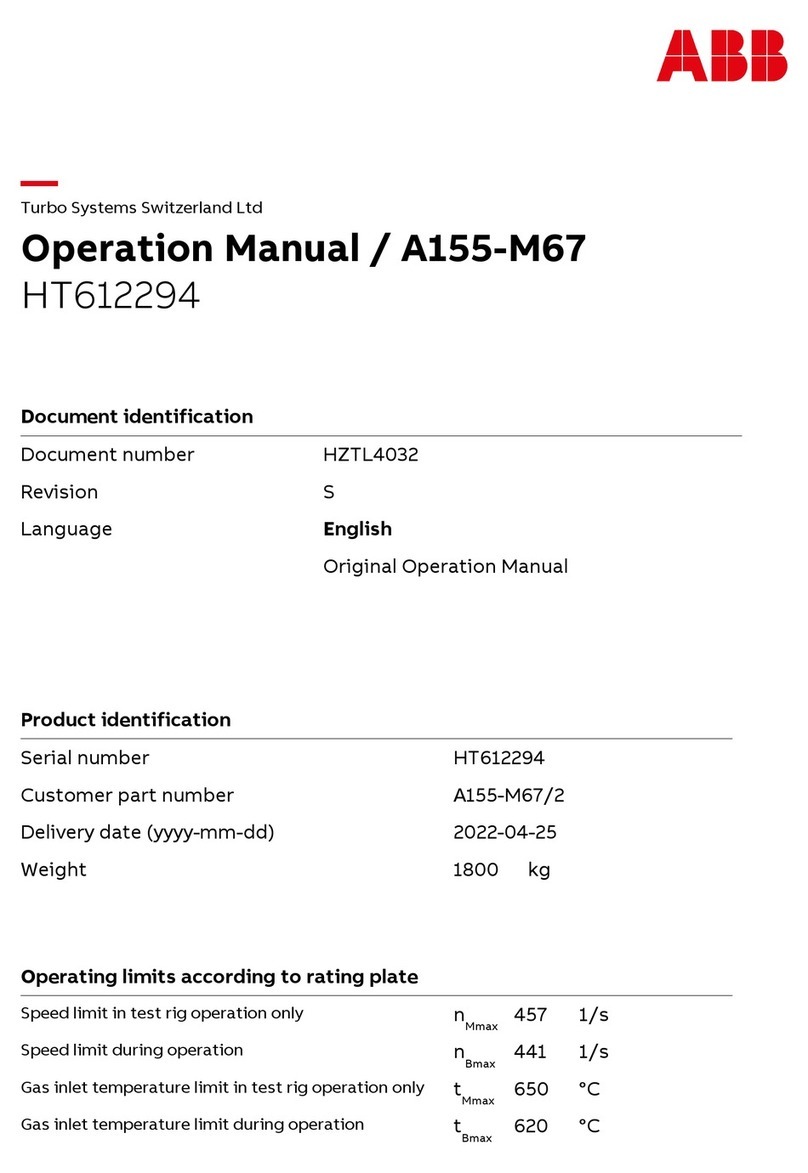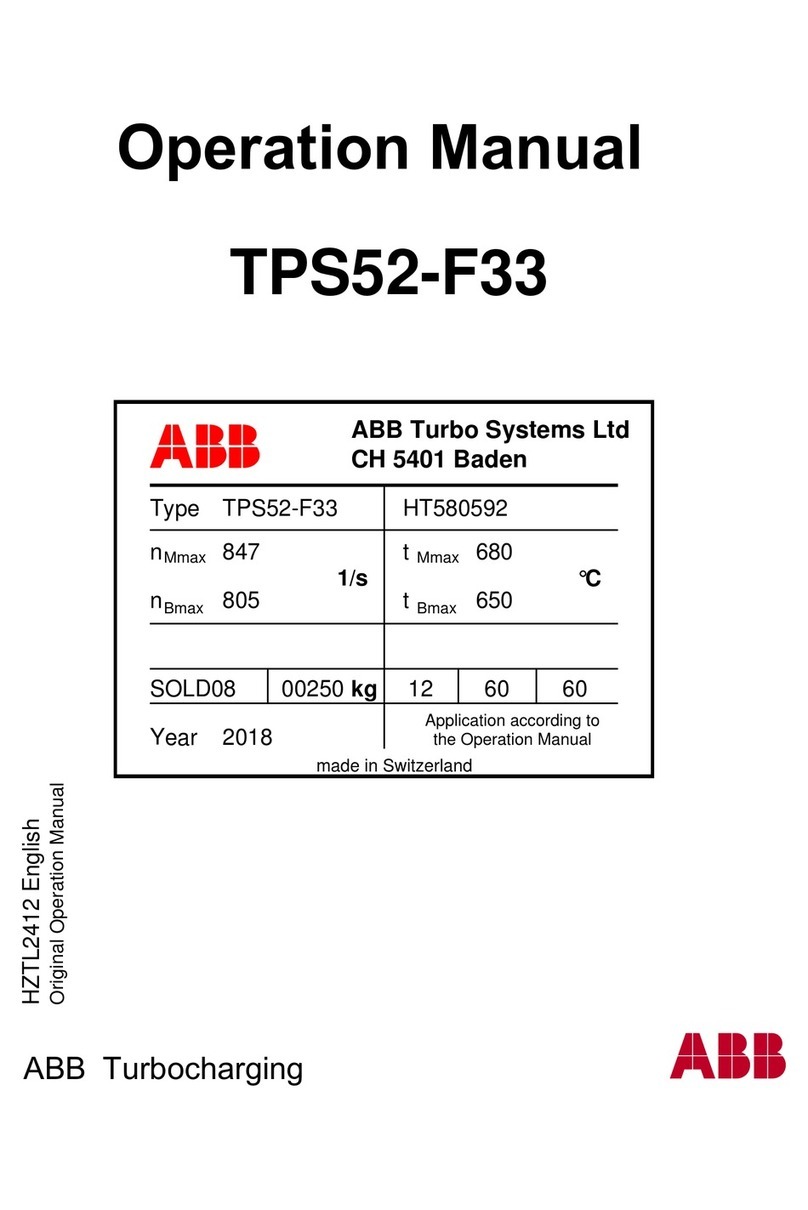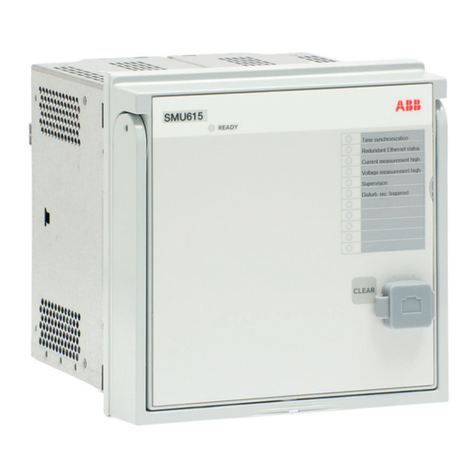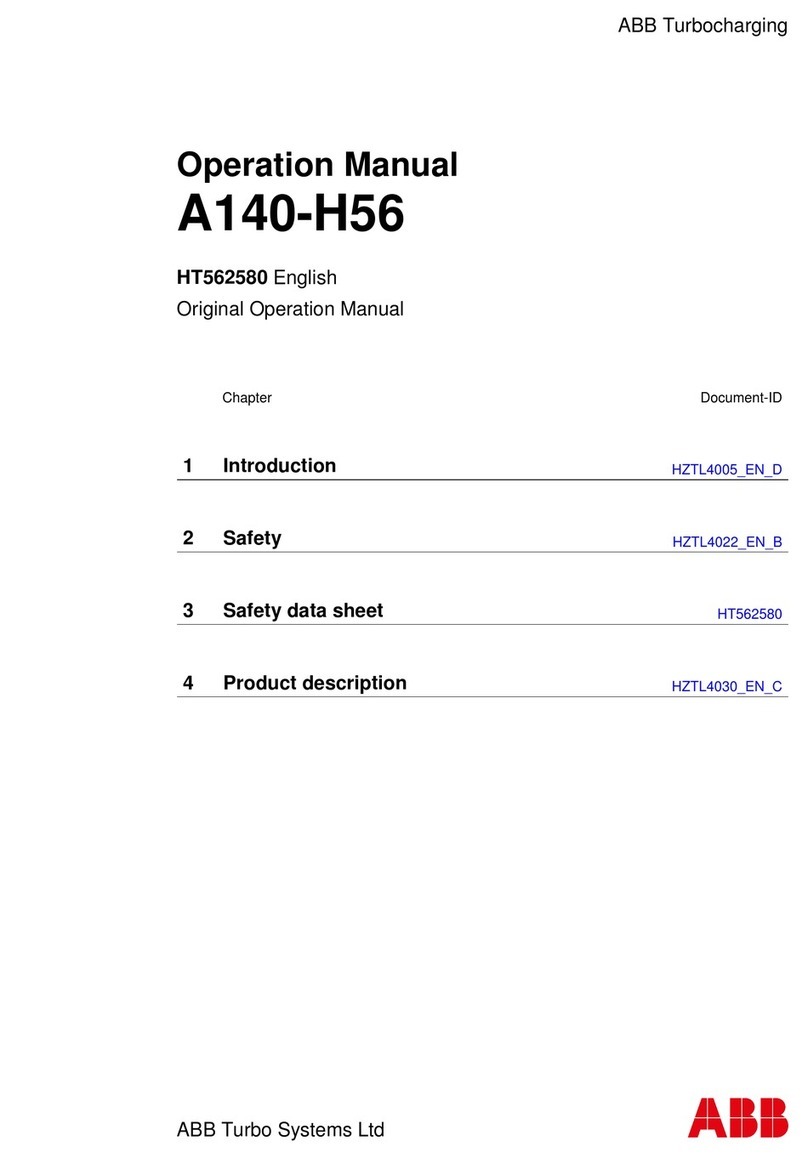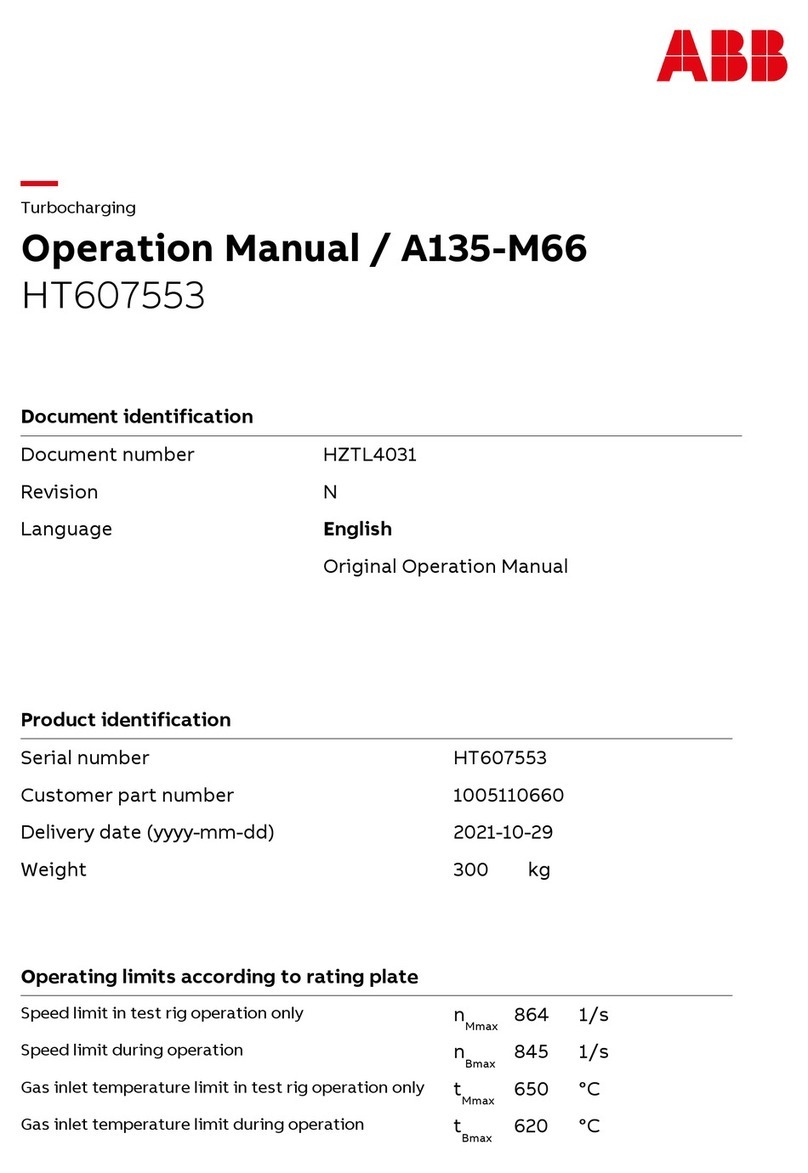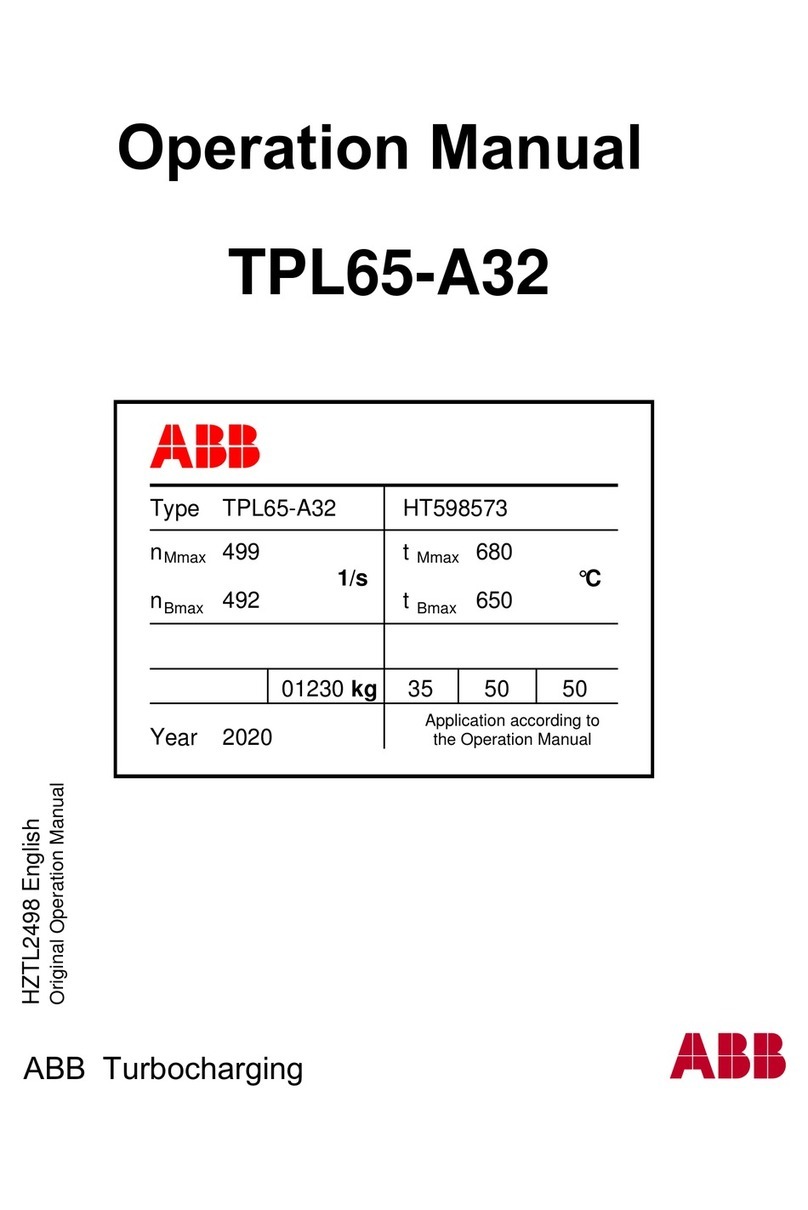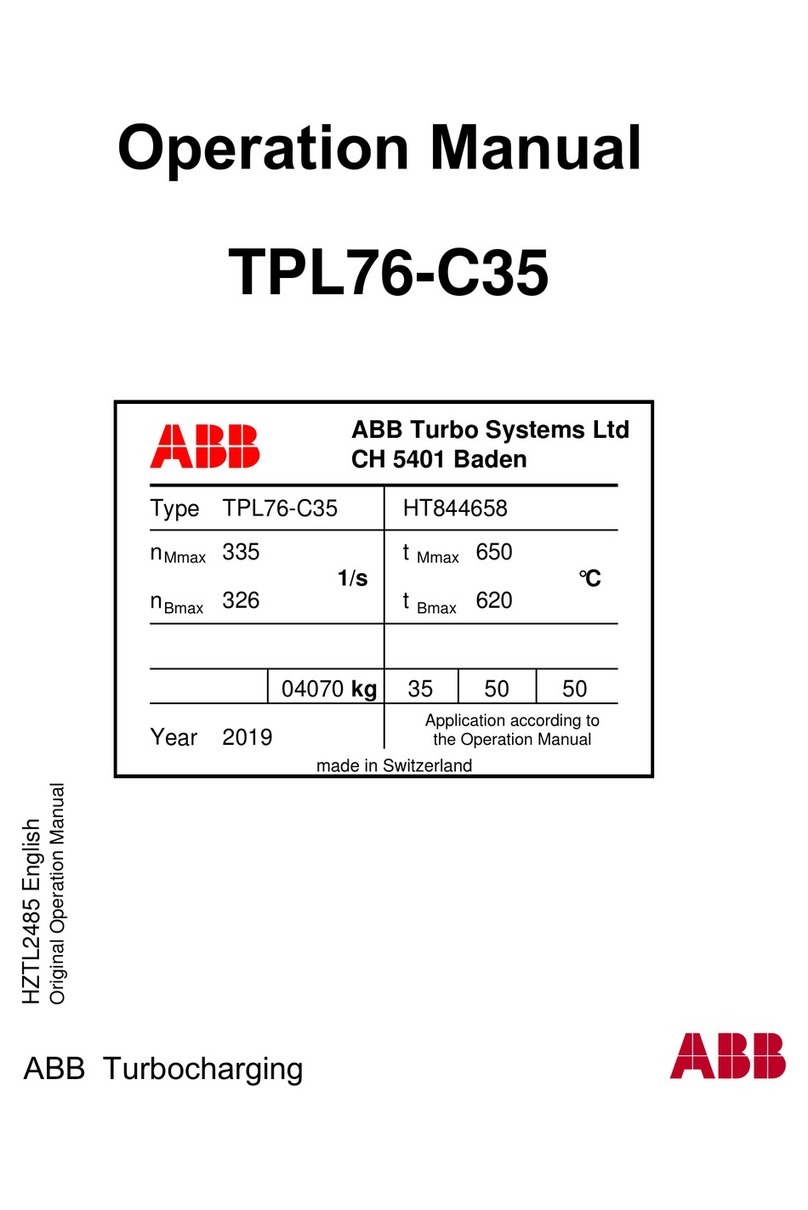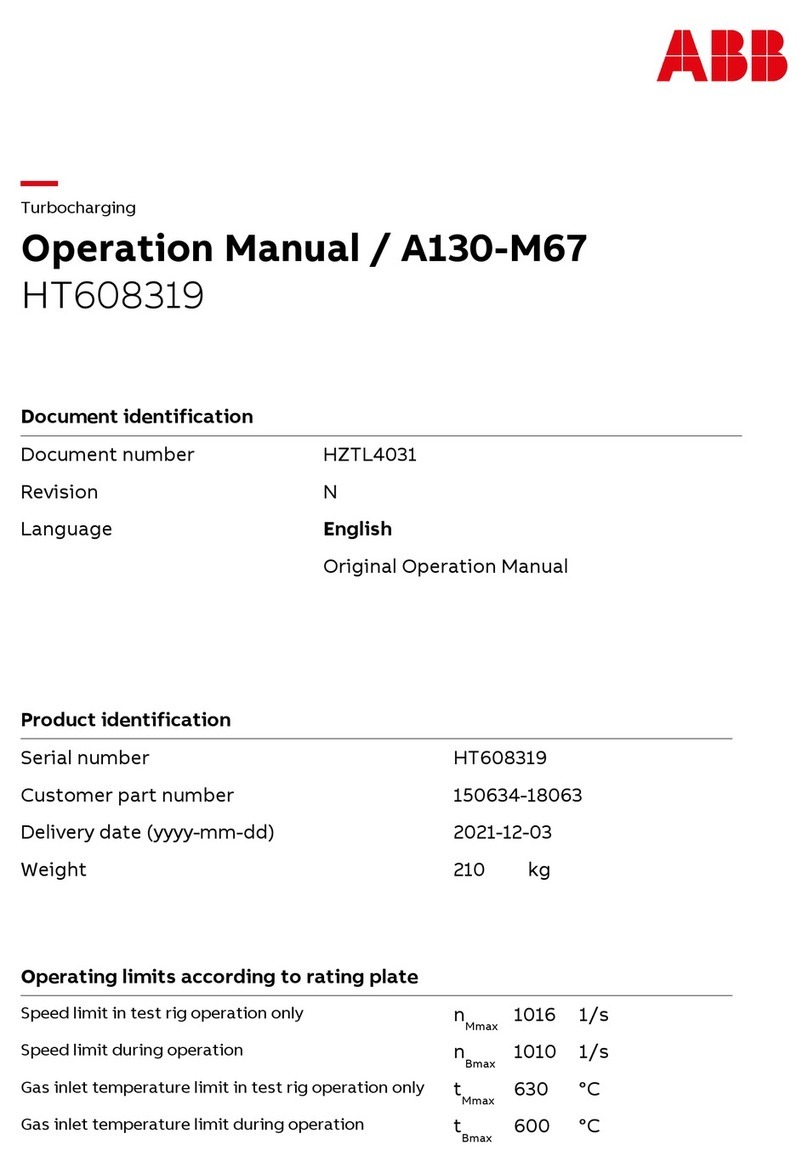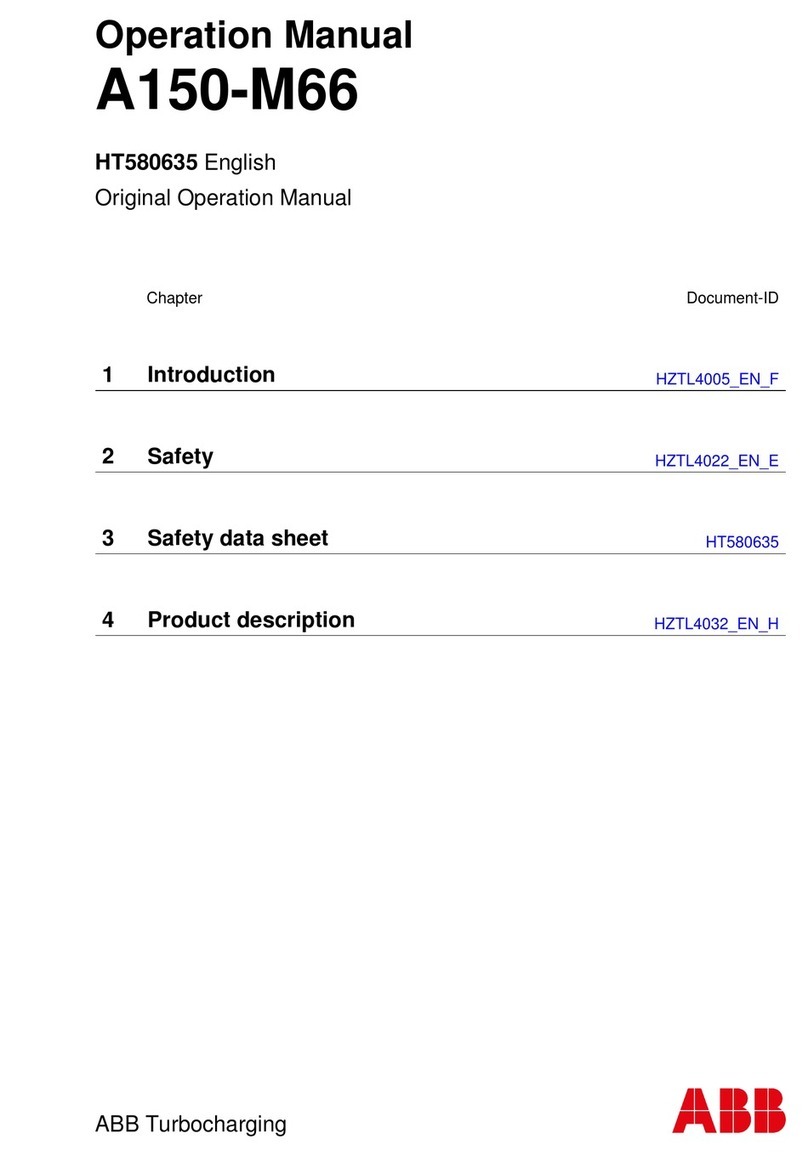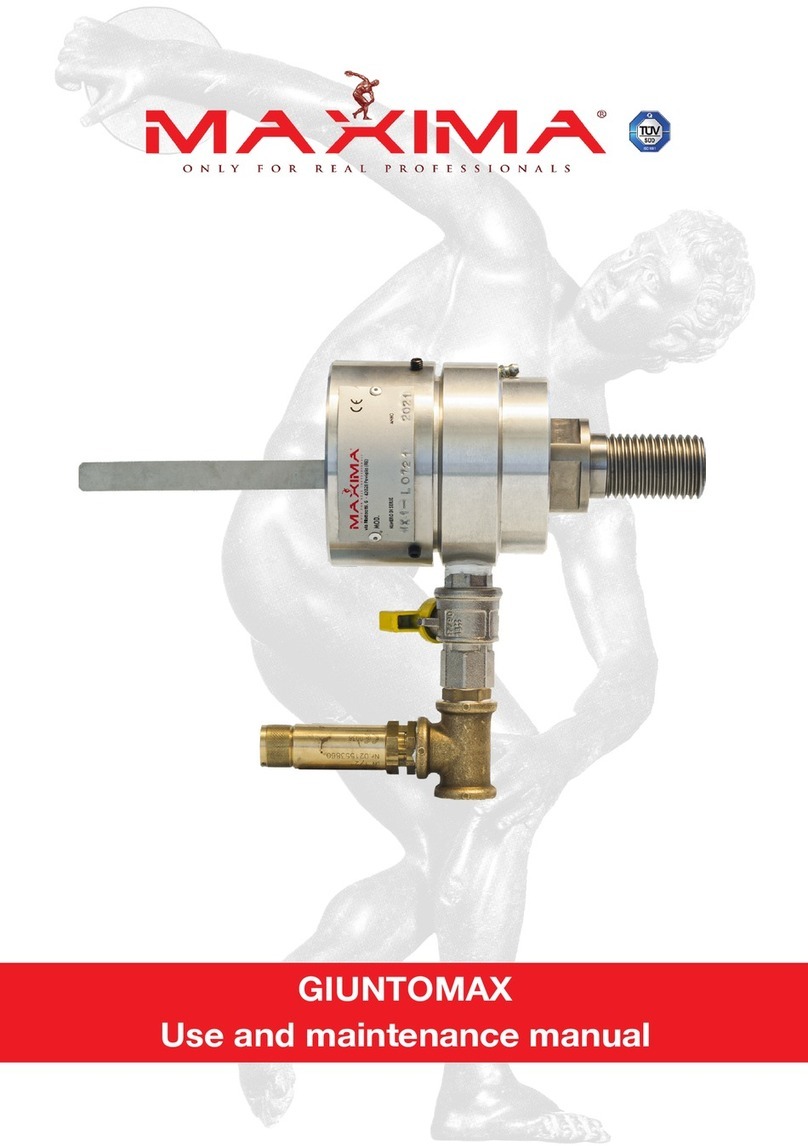
4AMP1 INTEGRATED POWER AND ENERGY INSTALLATION INSTRUCTIONS
For
troubles
hooting
or
serv
ice
relat
ed
questions,
conta
ct
AB
B
at
800
-782-80
61
or
a
t
epis.componen
[email protected]AMP1
Safety
FCC PART 15 INFORMATION NOTE: This equipment has been
tested by the manufacturer and found to comply with the
limits for a class B digital device, pursuant to part 15 of the
FCC Rules. These limits are designed to provide reasonable
protection against harmful interference when the equipment
is operated in a residential environment. This equipment
generates, uses, and can radiate radio frequency energy and, if
not installed and used in accordance with the instruction
manual, may cause harmful interference to radio
communications. This device complies with part 15 of the FCC
Rules.
Operation is subject to the following two conditions:
(1) This device may not cause harmful interference, and
(2) This device must accept any interference received,
including interference that may cause undesired operation.
Modifications to this product without the express
authorization of the manufacturer nullify this statement.
A qualified person is one who has skills and knowledge related
to the construction and operation of this electrical equipment
and the installation, and has received safety training to
recognize and avoid the hazards involved.
NEC2011 Article 100: No responsibility is assumed by
manufacturer for any consequences arising out of the use of
this material.Control system design must consider the
potential failure modes of control paths and, for certain
critical control functions, provide a means to achieve a safe
state during and after a path failure. Examples of critical
control functions are emergency stop and over-travel stop.
This symbol indicates an electrical shock
hazard exists.
Documentation must be consulted where this
symbol is used on the product.
DANGER: Hazard of Electric Shock, Explosion or Arc
Flash Failure to follow these instructions will result in
death or serious injury.
• Follow safe electrical work practices. See NFPA 70E in
the USA, or applicable local codes.
• This equipment must only be installed and serviced by
qualified electrical personnel.
• Read, understand and follow the instructions before
installing this product.
• Turn off all power supplying equipment before working
on or inside the equipment.
• Use a properly rated voltage sensing device to confirm
power is off. DO NOT DEPEND ON THIS PRODUCT FOR
VOLTAGE INDICATION
• Only install this product on insulated conductors
WARNING: Loss of Control
• Failure to follow these instructions may cause injury,
death or equipment damage.
• Assure that the system will reach a safe state during and
after a control path failure.
• Separate or redundant control paths must be provided
for critical control functions.
• Test the effect of transmission delays or failures of
communication links.
• Each implementation of equipment using
communication links must be individually and
thoroughly tested for proper operation before placing it
in service.a
NOTICE:
• This product is not intended for life or safety
applications.
• Do not install this product in hazardous or classified
locations.
• The installer is responsible for conformance to all
applicable codes
• Mount this product inside a suitable fire and electrical
enclosure.
